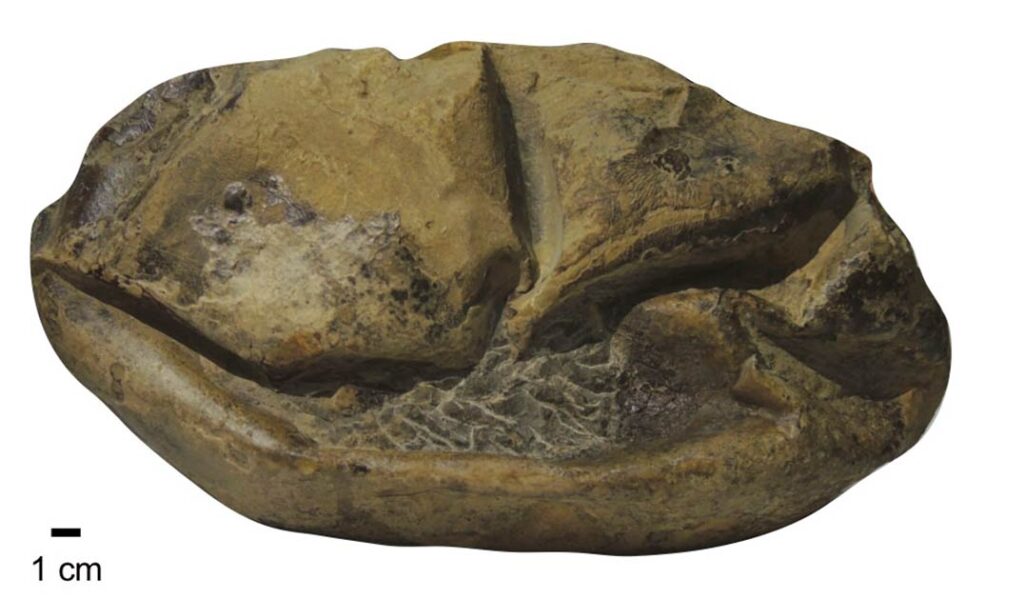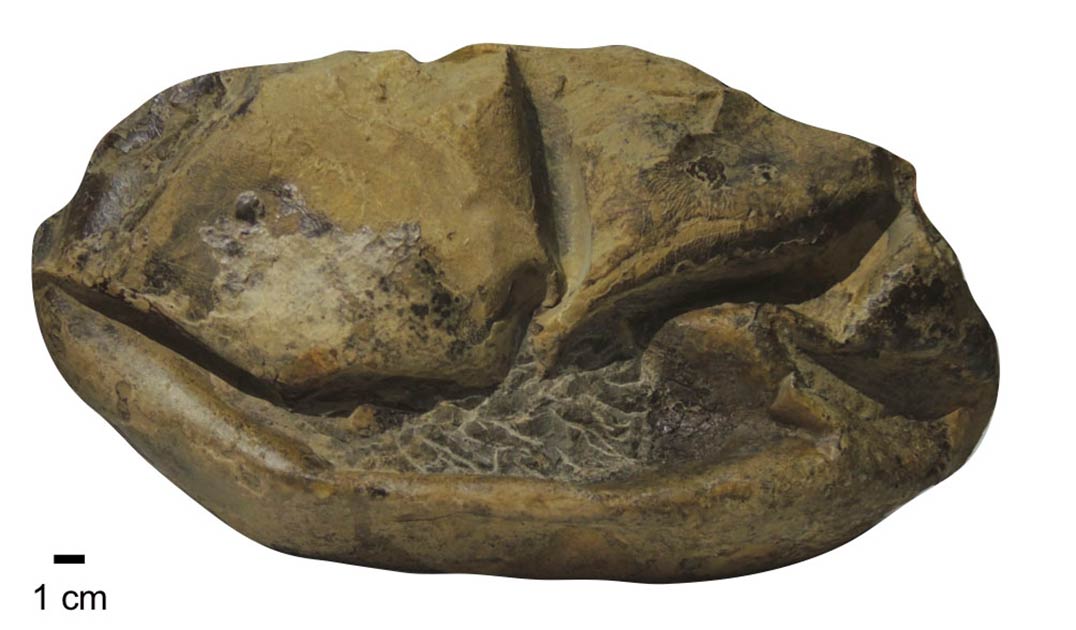

Researchers believe that they have deciphered the secrets of a mysterious fossil that was found in Antarctica. They now believe that the Antarctica fossil was a soft egg that belonged to an extinct sea reptile. This find is very important and it is changing how experts view the evolution of the dinosaurs.
The remains were unearthed by the Chilean Antarctic Institute (INACH) in the desolate Antarctic Peninsula in 2011. Millions of years ago, dinosaurs lived on the frozen continent and swam in its waters. The member of the team who found the fossil, David Rubilar-Rogers of Chile’s National Museum of Natural History, was mystified by the Antarctica fossil. He asked visiting experts to help him identify the fossil, but none could. The object has been likened by many to a deflated football and been nicknamed “The Thing,” a reference to the classic horror movie set in Antarctica.

An artist’s interpretation of a baby mosasaur emerging from an egg. (John Maisano / Jackson School of Geosciences – University of Texas)
Mystery of Football-Shaped Antarctica Fossil Is Finally Resolved
One day Rubilar-Rogers showed the fossil to Prof. Julia Clarke, of the University of Texas At Austin, who was visiting the National Museum. She examined the mysterious fossil and after a few minutes she had solved the mystery. Rubilar-Rogers told UT News that ‘I showed it to her and, after a few minutes, Julia told me it could be a deflated egg!’
The fossil was later analyzed by specialists from the University of Texas using high-powered microscopes. They confirmed Prof. Clarke’s theory. They found that it was the remains of a 66 million-year-old egg. UT News reports that “the specimen is the first fossil egg found in Antarctica.” Furthermore, it is a soft-shelled egg, not the hard eggs typically found from the era of the dinosaur. Dr. Lucas Legerde who took part in the analysis told The Independent that “the structure is very similar to transparent, quick-hatching eggs laid by some snakes and lizards today.”
Who Laid this Mystery Dinosaur Egg?
The egg is massive and measures 11 x 7 inches (28 x 18 cm). This means that it is the second-largest egg that has ever been found. The largest egg ever found was from the extinct Madagascan elephant bird, which was hunted to extinction by humans a millennium ago.

Diagram of the Antarctica fossil egg and its components. There is a cross section lower left. Its relative size to an adult human is shown bottom right. (Legendre et al. 2020 / University of Texas)
Researchers could not determine the creature to whom the egg belonged. Dr. Legerde is quoted by The Independent as saying that “it is from an animal the size of a large dinosaur, but it is completely unlike a dinosaur egg.” The researcher told UT that he believes that the egg “is most similar to the eggs of lizards and snakes, but it is from a truly giant relative of these animals.”
Egg Believed to Belong to Huge Ancient Sea-Reptile
The team had no idea of the identity of the reptile that laid the egg because no skeleton was found. As part of their research, a data set was compiled that compared the size of reptiles to their eggs. Coast to Coast reports that “scientists determined that the creature that left behind the fossilized find was at least 20 feet long.” It was theorized that it was laid by a mosasaur, a huge ancient sea reptile. Remains of these fearsome creatures have been found in the area near where the football-like fossil was unearthed.

Artist’s interpretation of a mosasaur, an extinct marine reptile, shown next to the egg and hatchling for the purpose of size comparison. (Francisco Hueichaleo, 2020 / University of Texas)
Dr. Legendre is quoted by The Independent as saying that the area where the remains were found was possibly “a nursery site with shallow protected water, a cove environment where the young ones would have had a quiet setting to grow up.” There are two possibilities as to how the mosasaurs laid their eggs. One was that they were laid in the shallow waters near a shoreline, similar to sea serpents. The other theory is that mosasaurs laid their eggs on the beach, after squirming their tail onto the shore and keeping the majority of their body submerged.
Discovery Provides New Insights in Dinosaur Evolution
The fact the fossil was that of a soft-shaped egg is very important. This adds to the research that theorizes that dinosaurs did not always lay hard eggs. It is believed that the first dinosaurs laid soft-shelled eggs, which were rather similar in composition and properties to the eggs of modern turtles. According to recent research by the American Museum of Natural History, this “suggests that hard-shelled eggs evolved at least three times independently in the dinosaur family tree.” This is helping experts to better understand the evolution of the dinosaur.
The findings of the study on the fossil found in Antarctica have been published in the academic journal Nature.